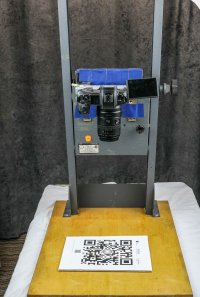Hi all,
Does anyone here know much about drum scanners? Are they practical to purchase for self use?
I've been shooting a bit of MF film and see that some sites want $60/scan on a drum scanner....wondering if there is a practical one to buy for home use?
I have my older Epson V600...and its "ok"...but thinking an upgrade would do me good....but I know nothing about drum scanners and hoping someone might could give me some advice, pointers or links to info.
Thanks in advance,
cayenne
Does anyone here know much about drum scanners? Are they practical to purchase for self use?
I've been shooting a bit of MF film and see that some sites want $60/scan on a drum scanner....wondering if there is a practical one to buy for home use?
I have my older Epson V600...and its "ok"...but thinking an upgrade would do me good....but I know nothing about drum scanners and hoping someone might could give me some advice, pointers or links to info.
Thanks in advance,
cayenne

